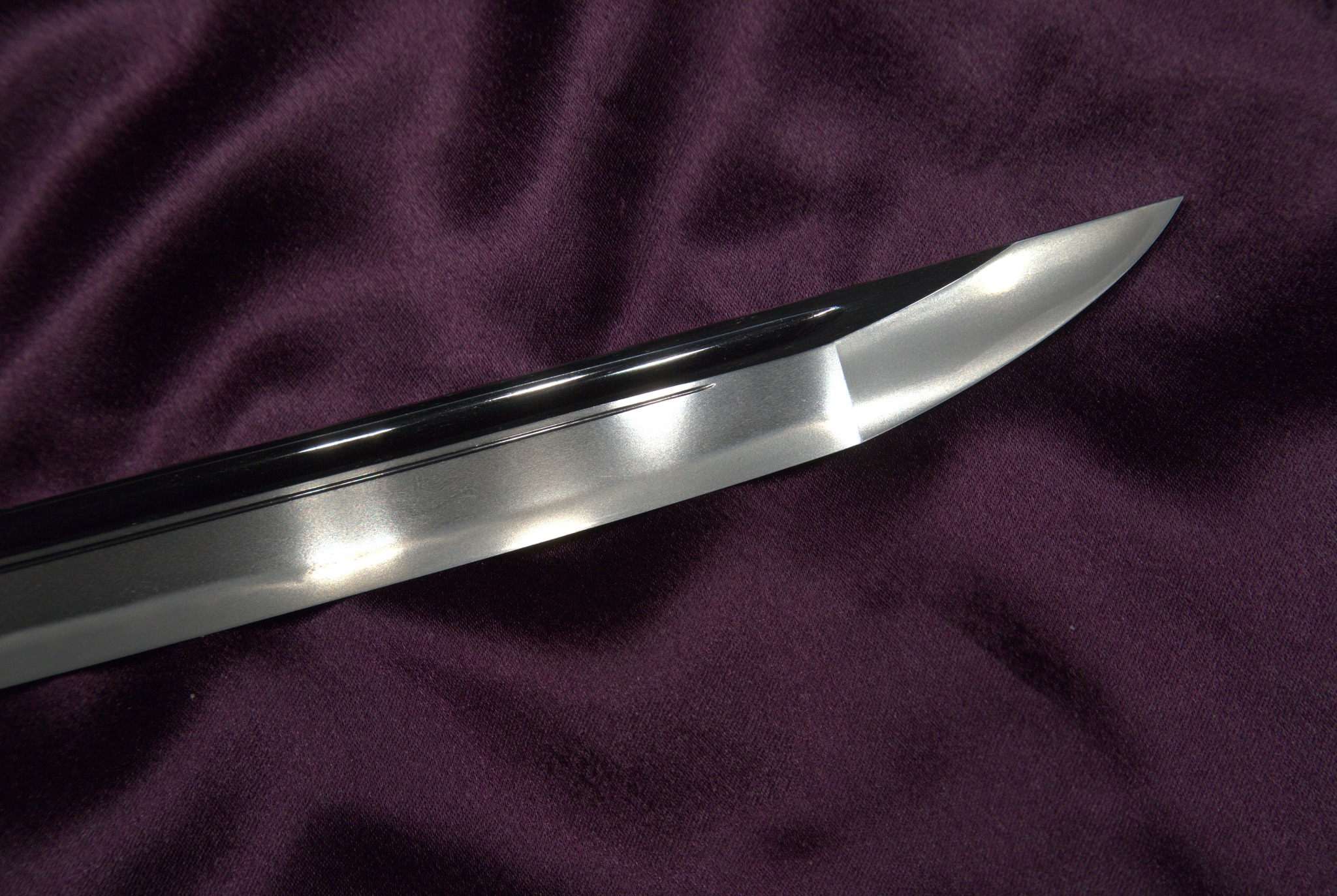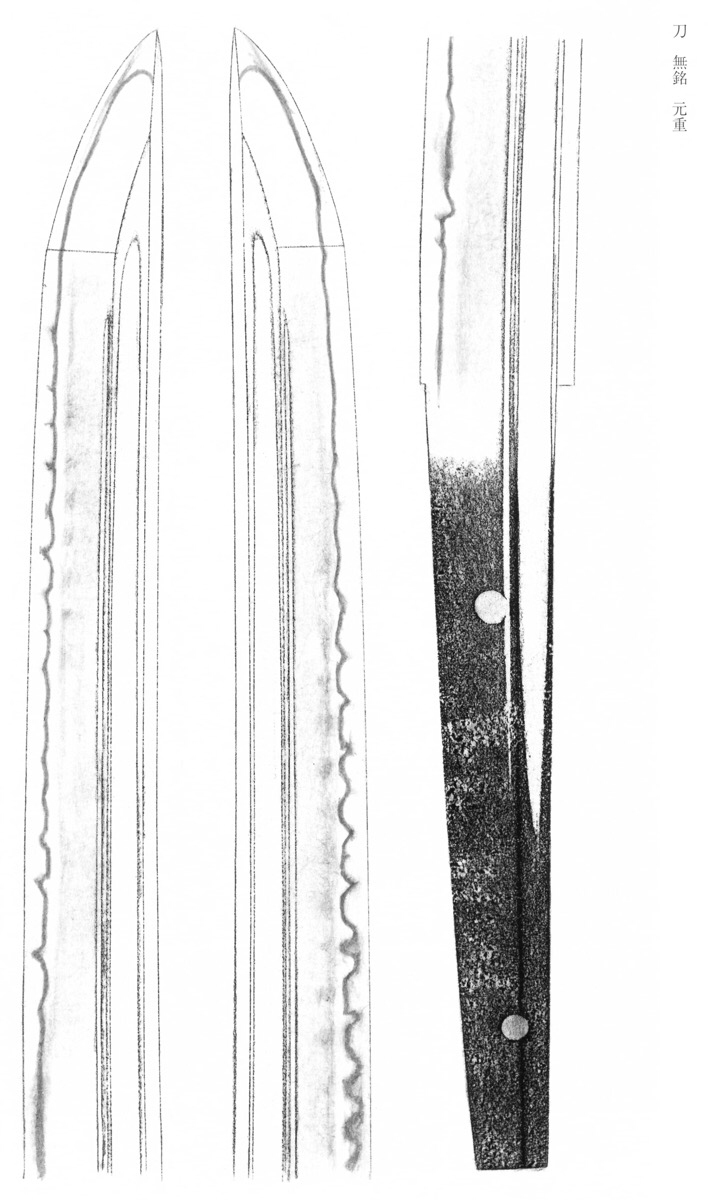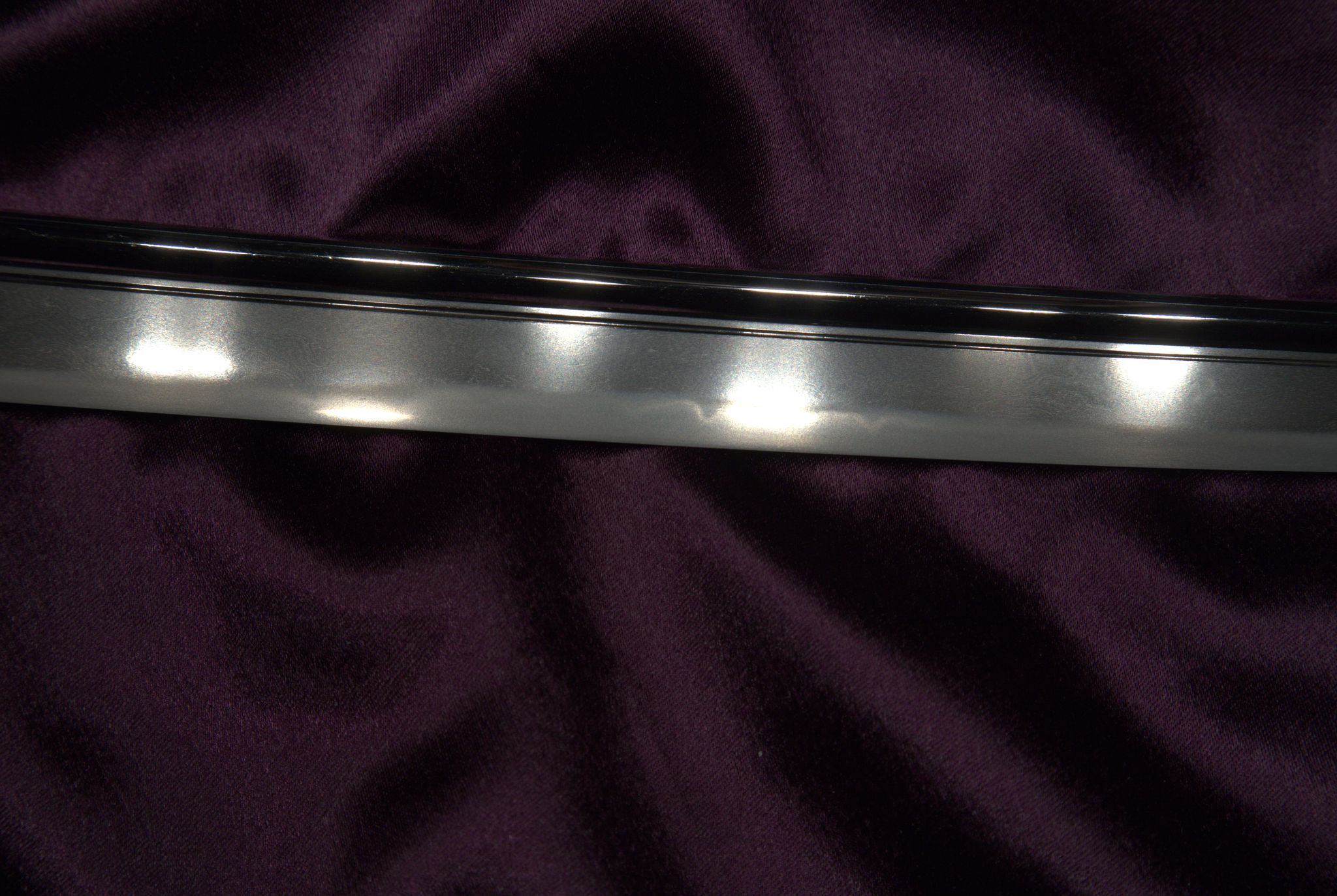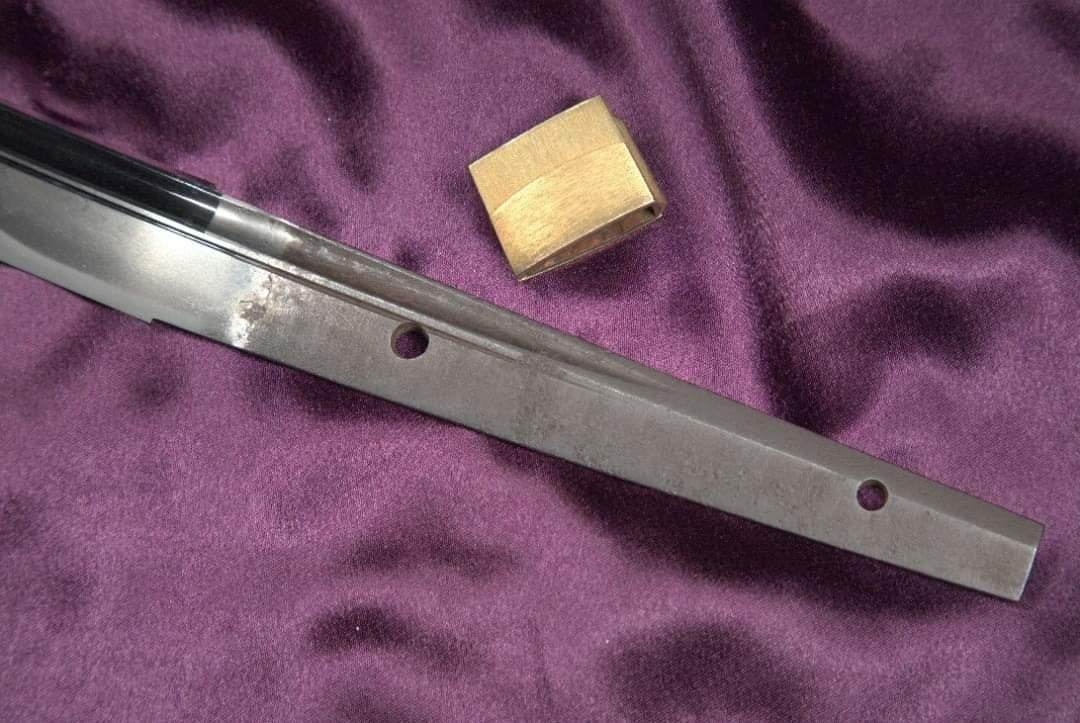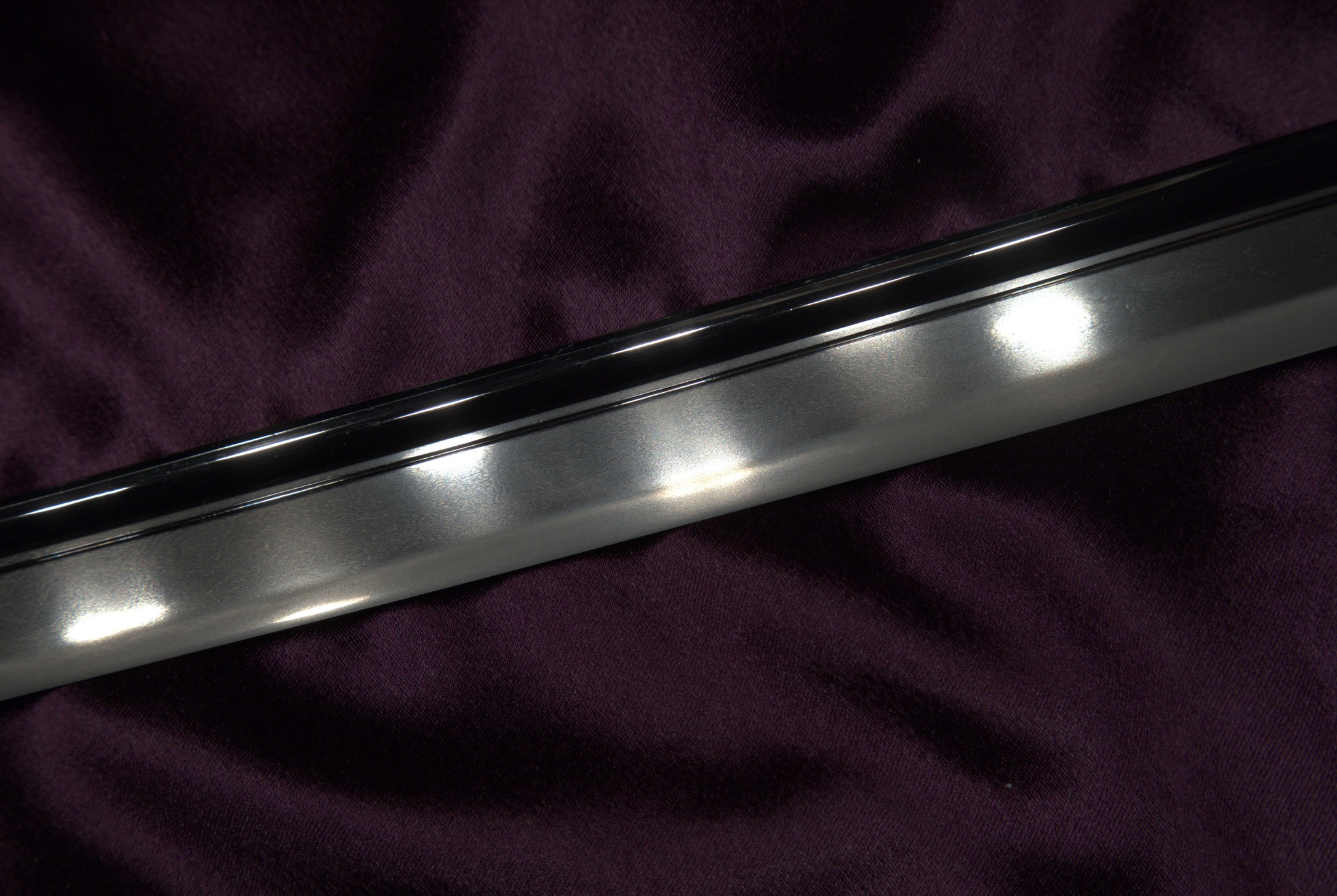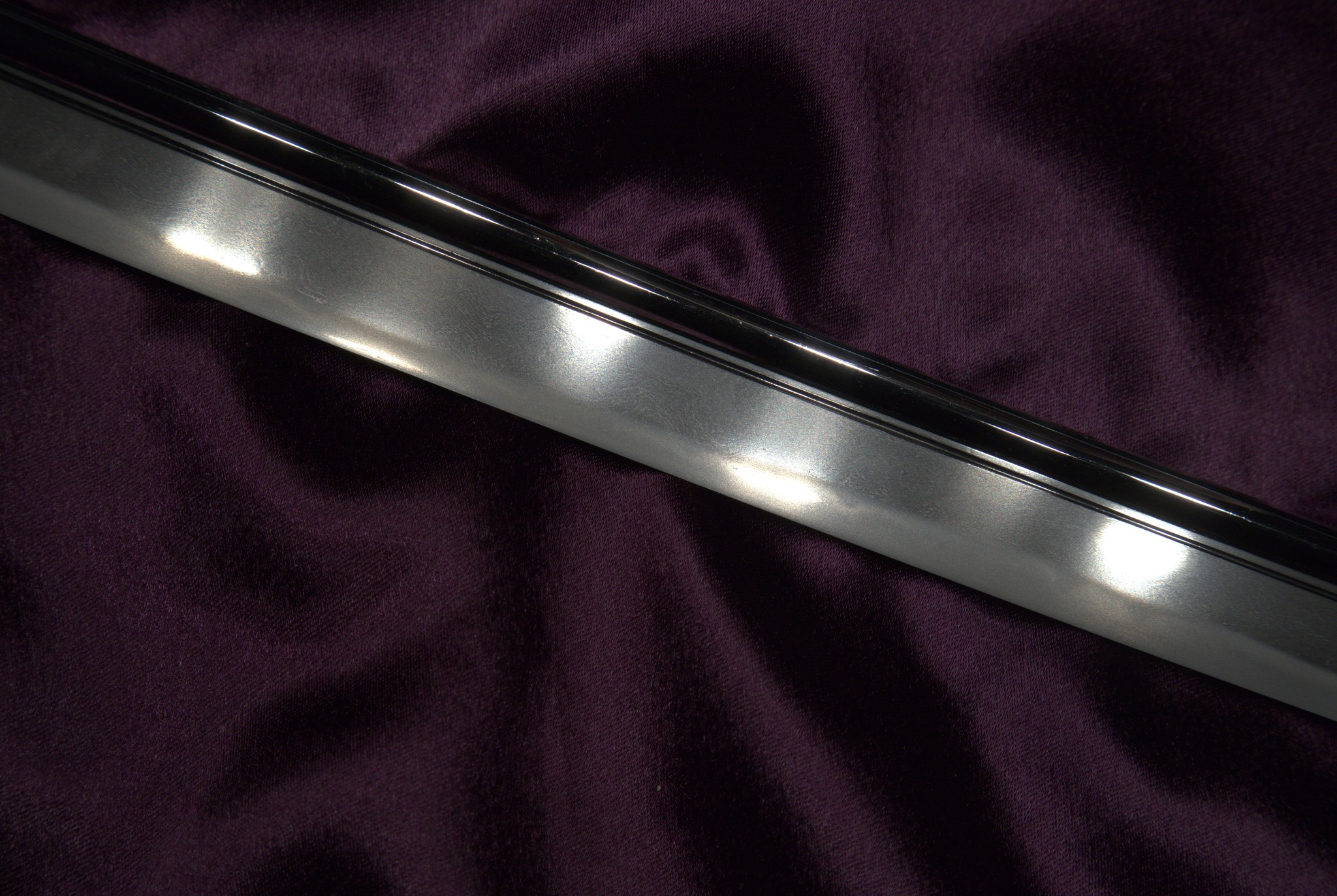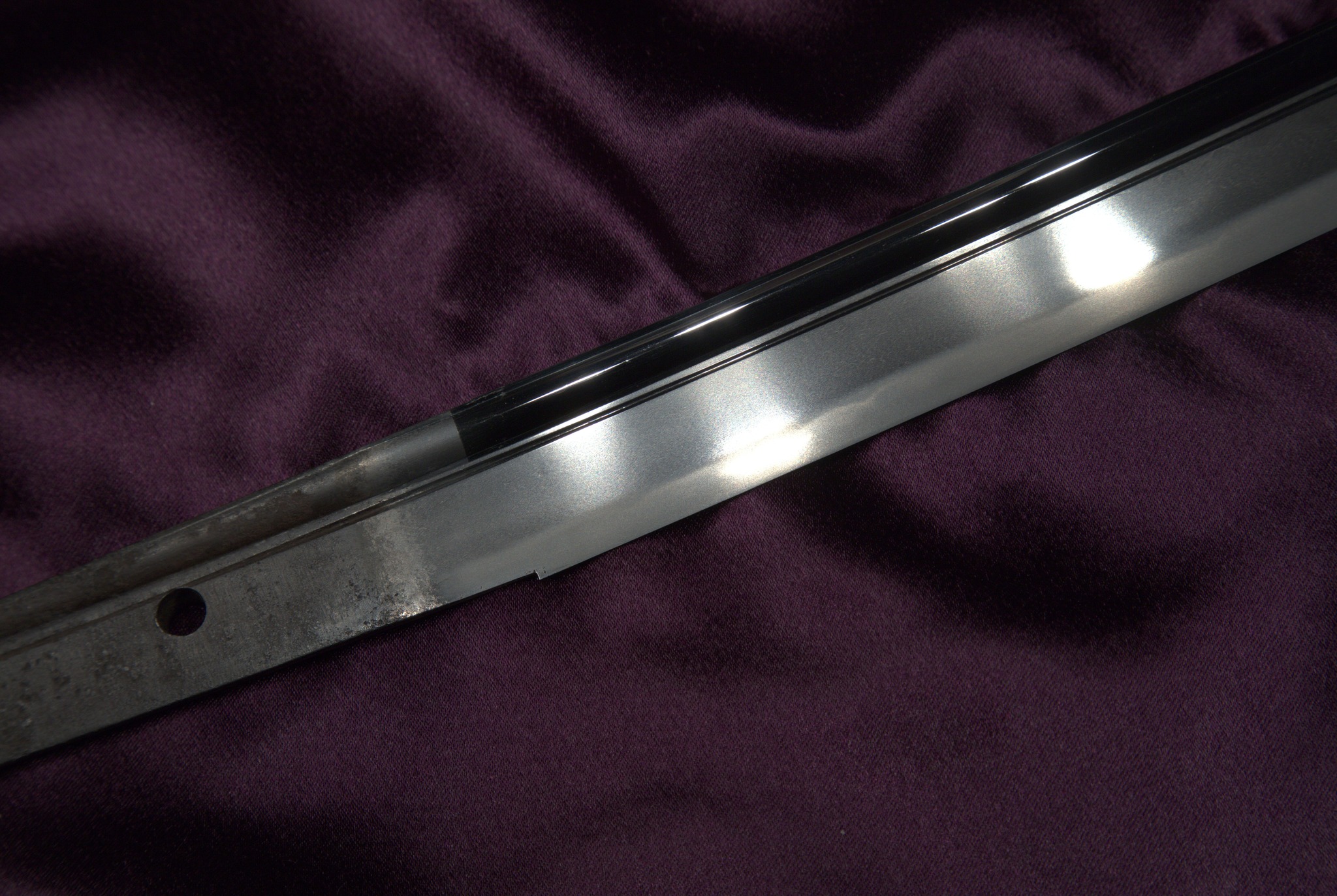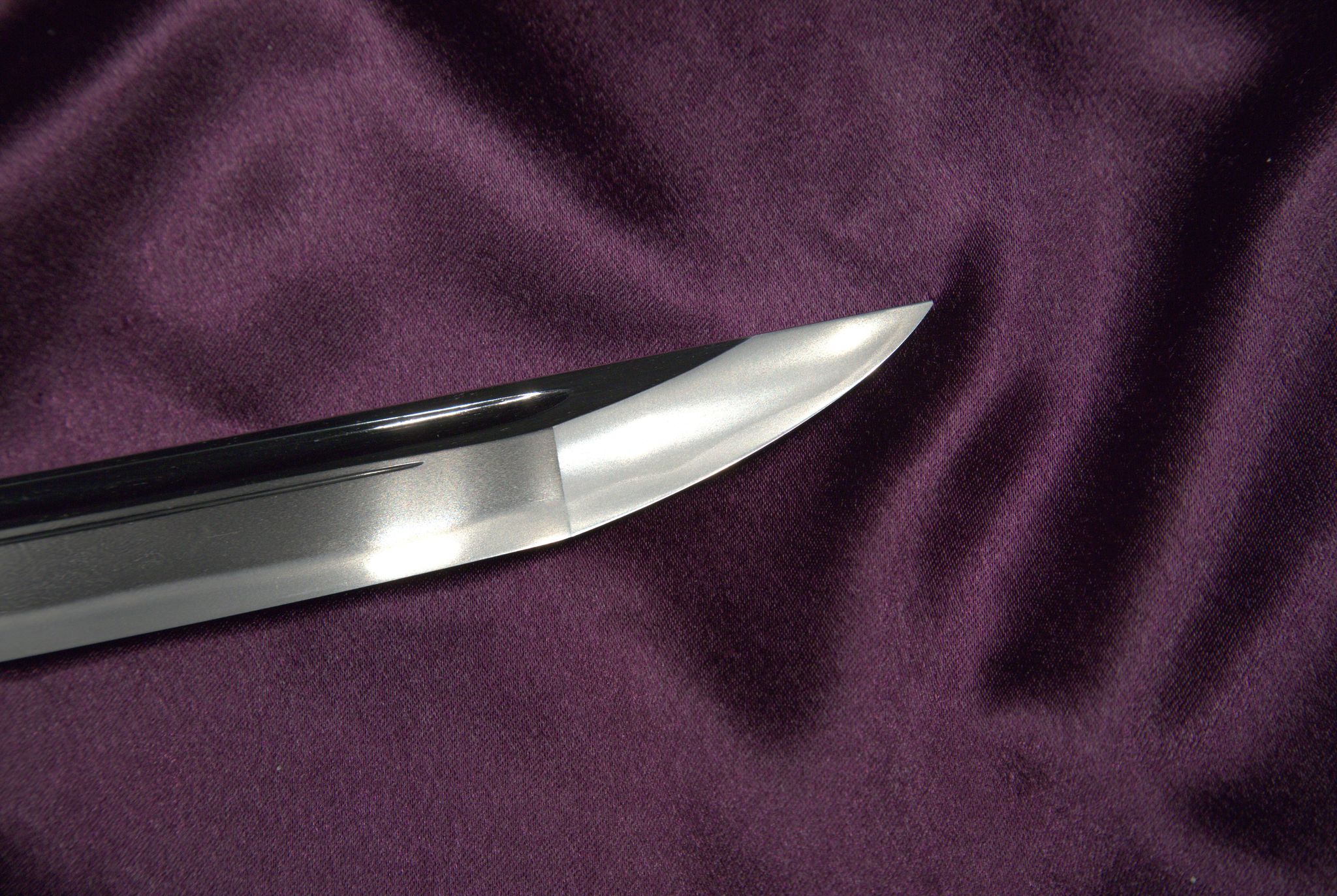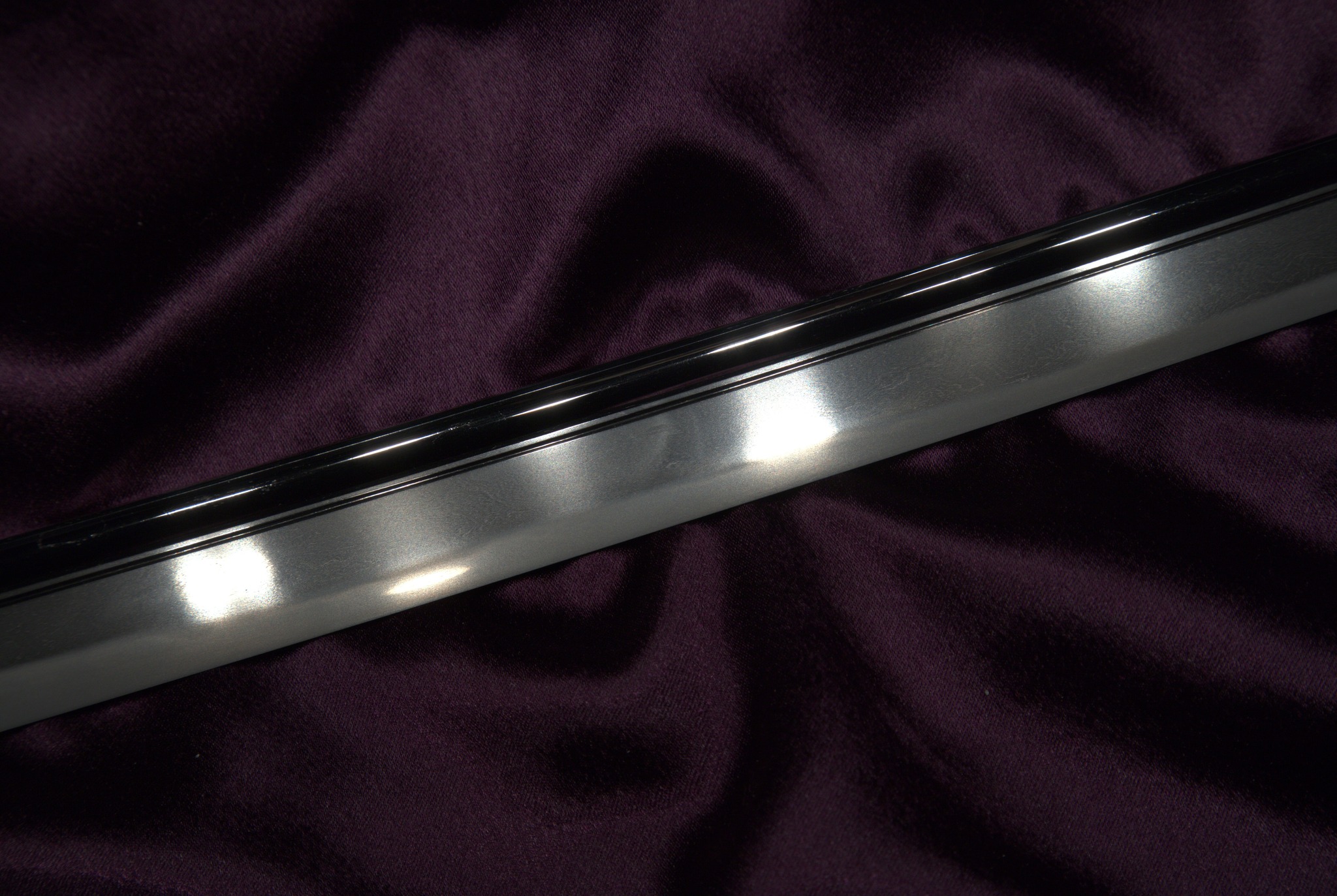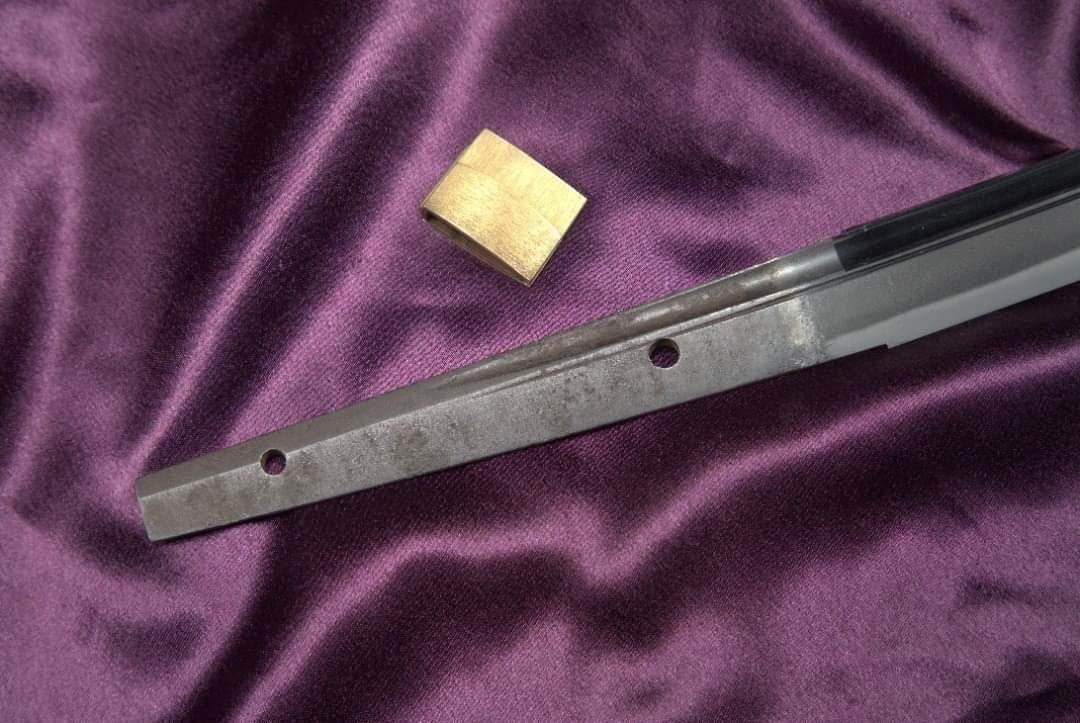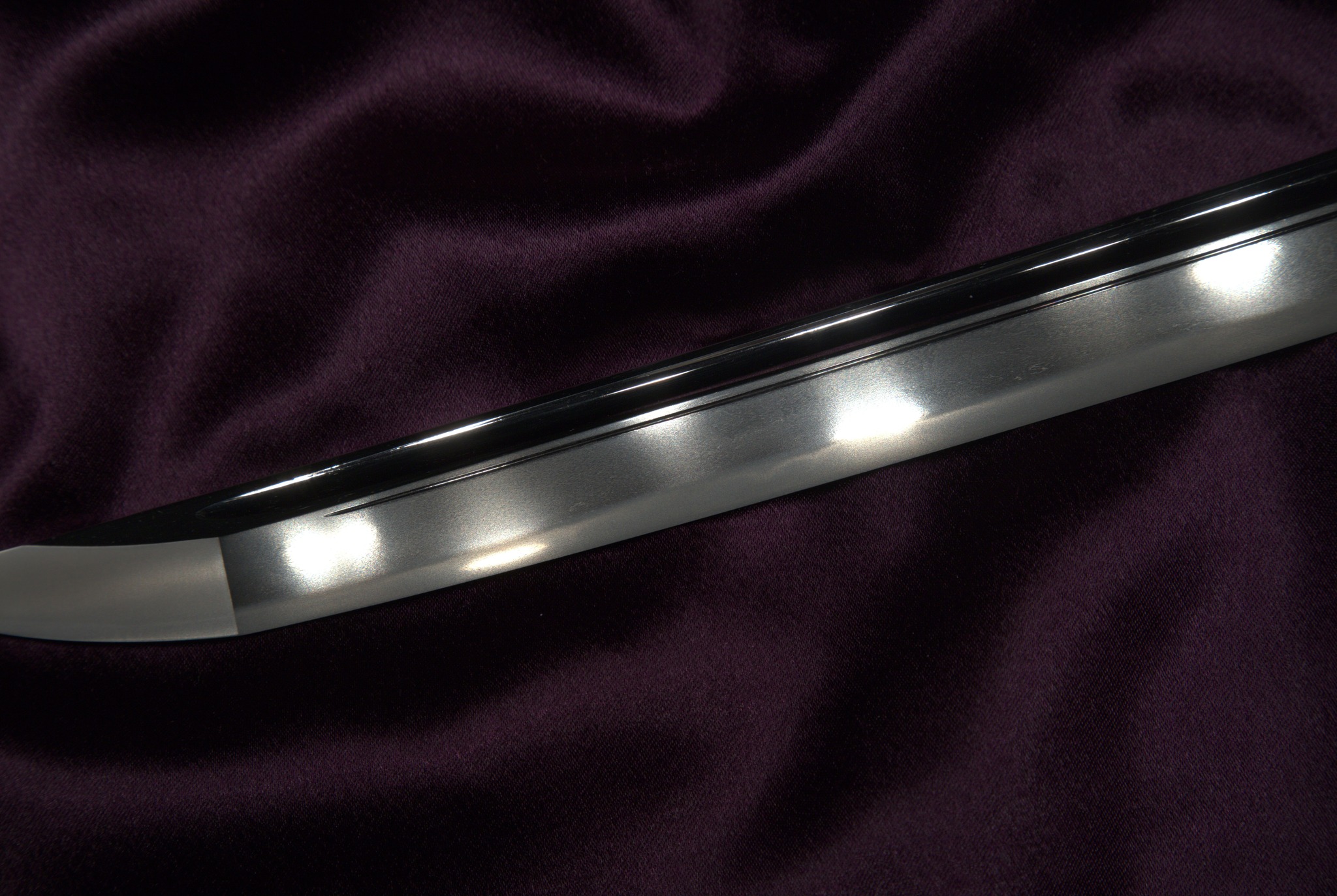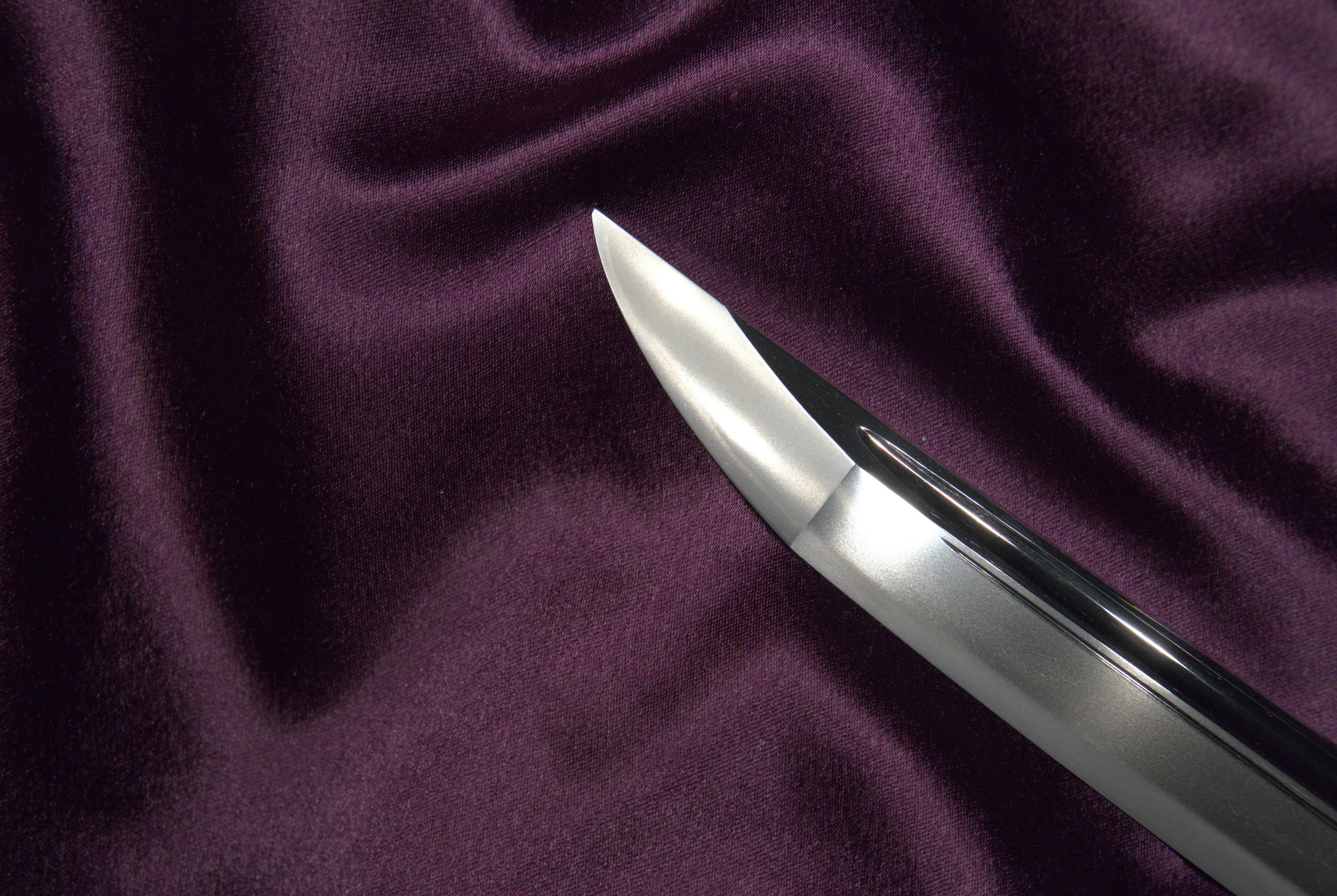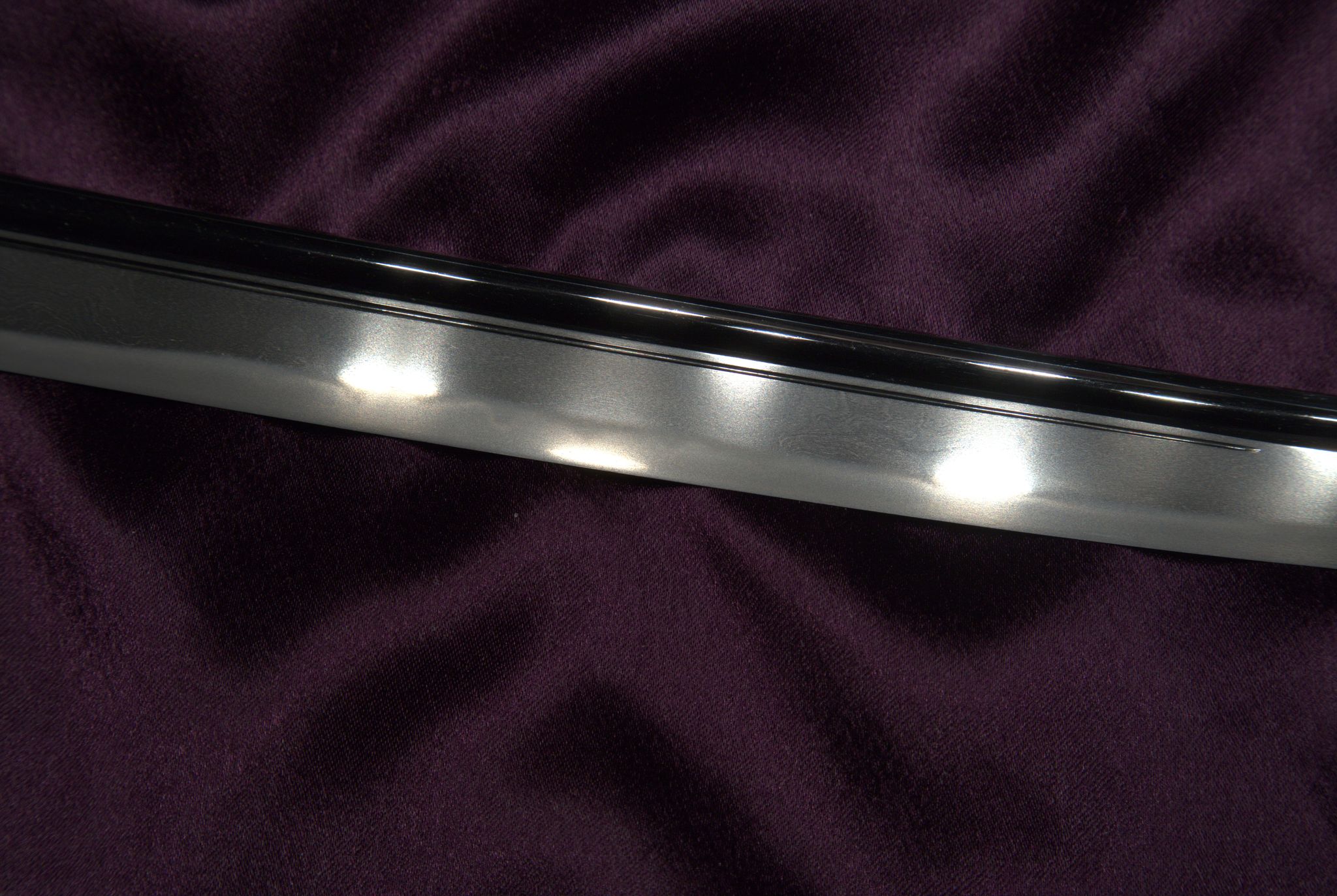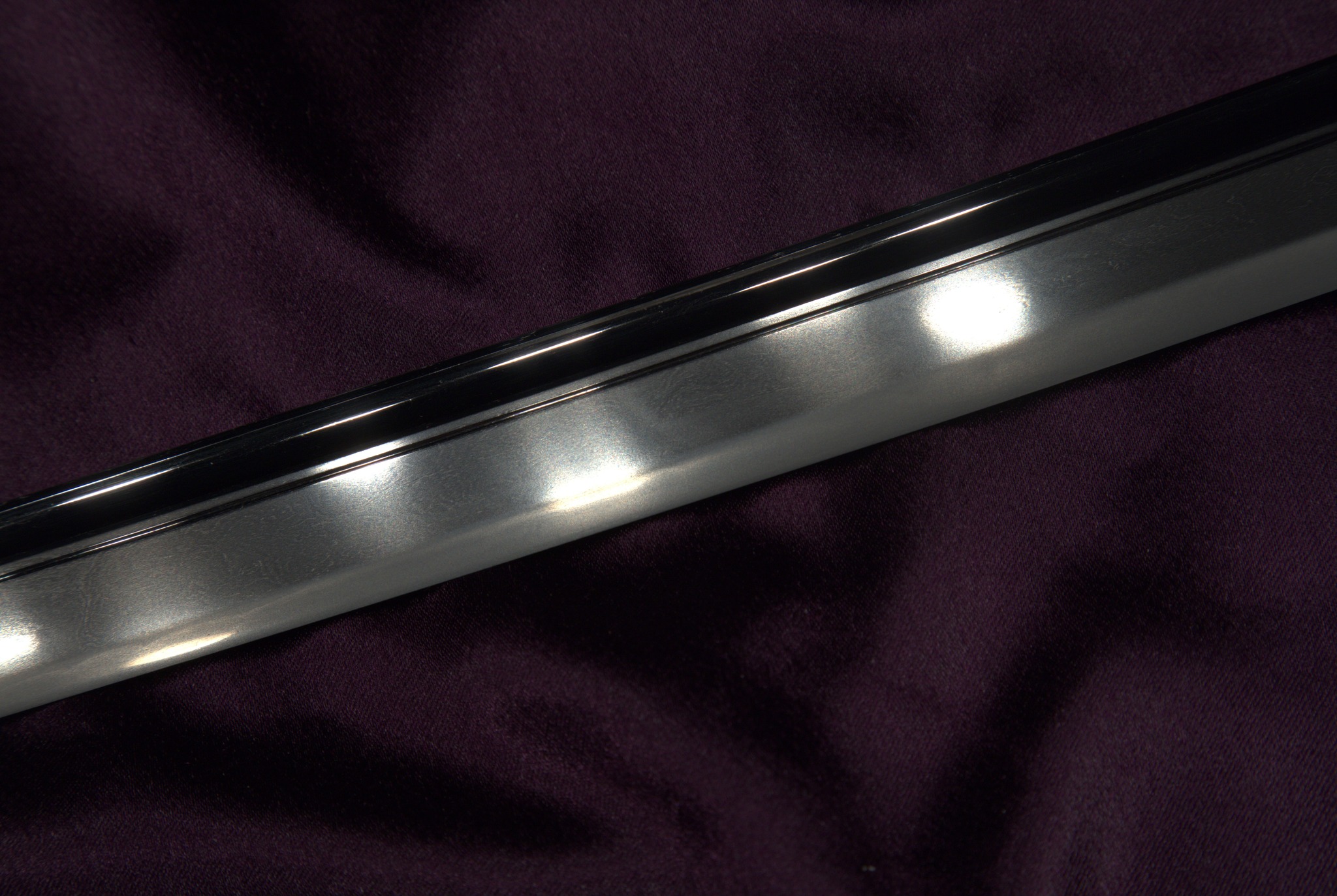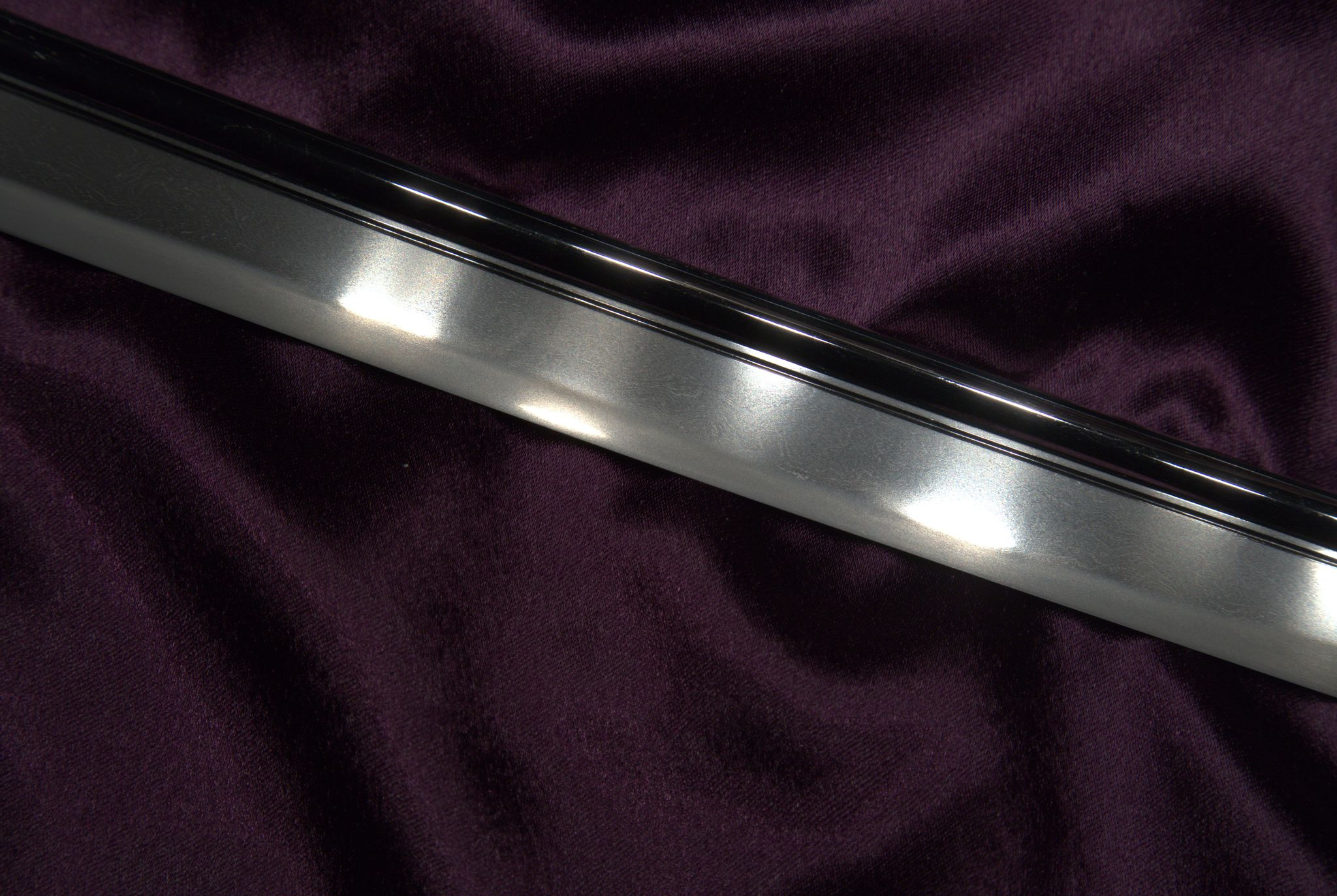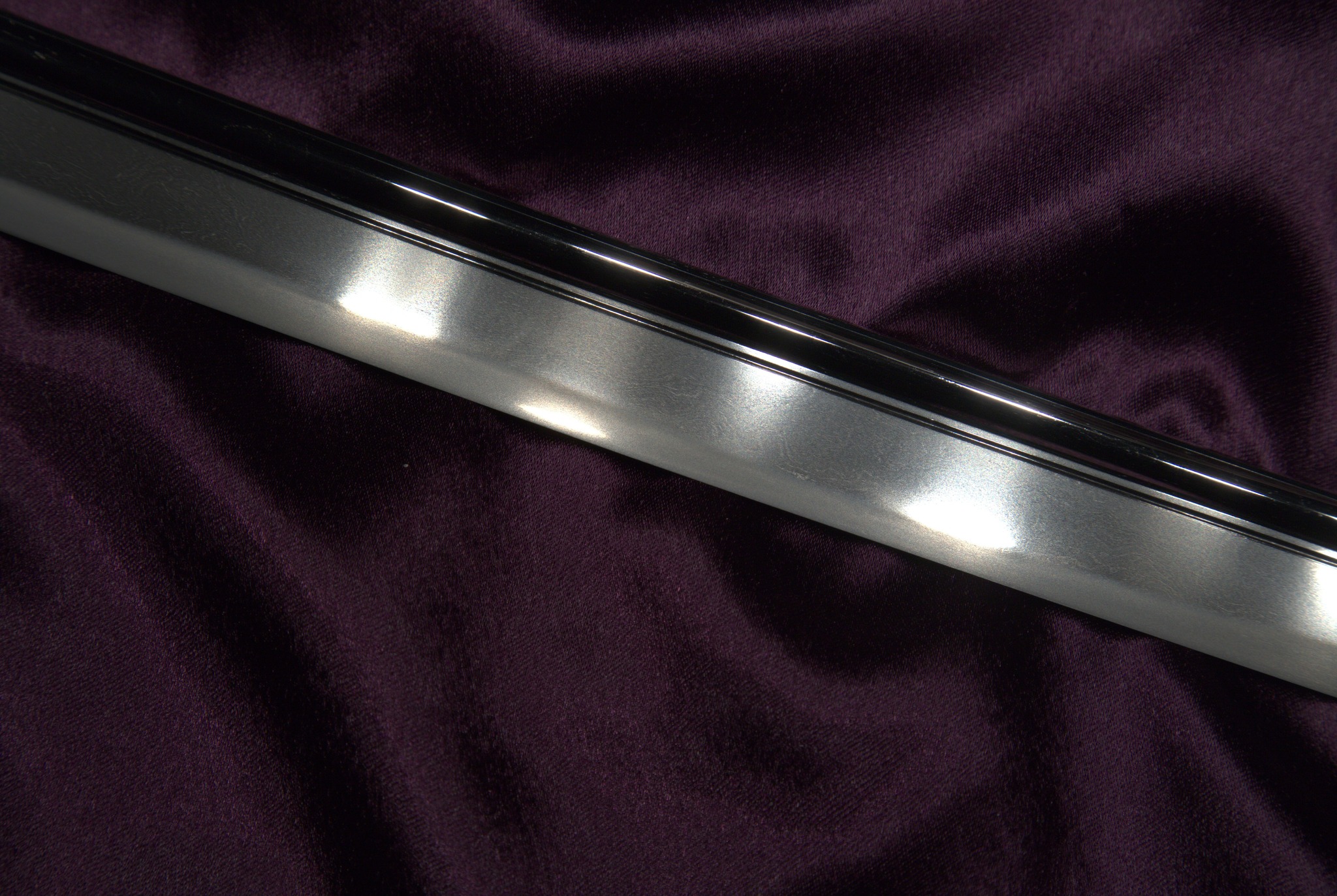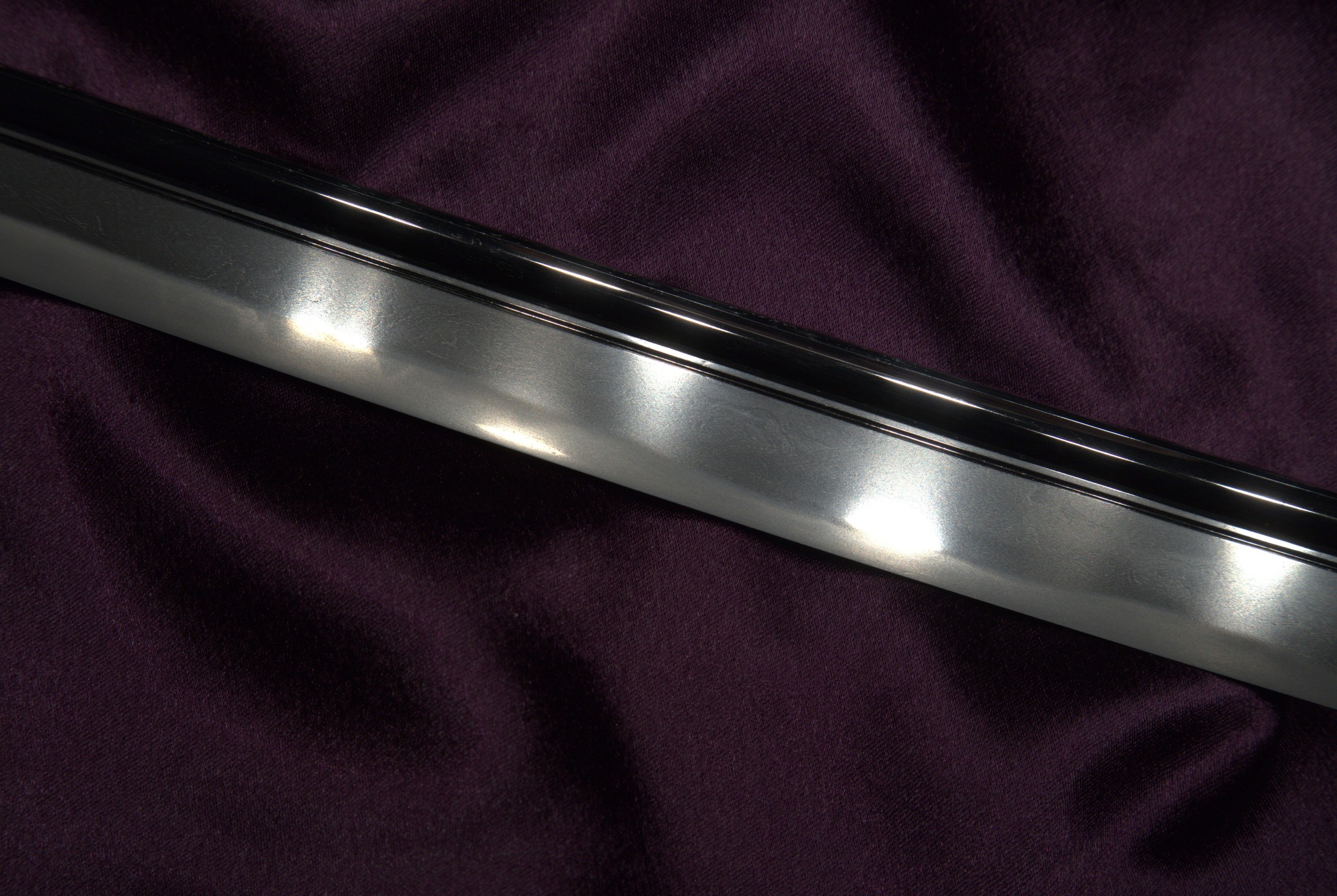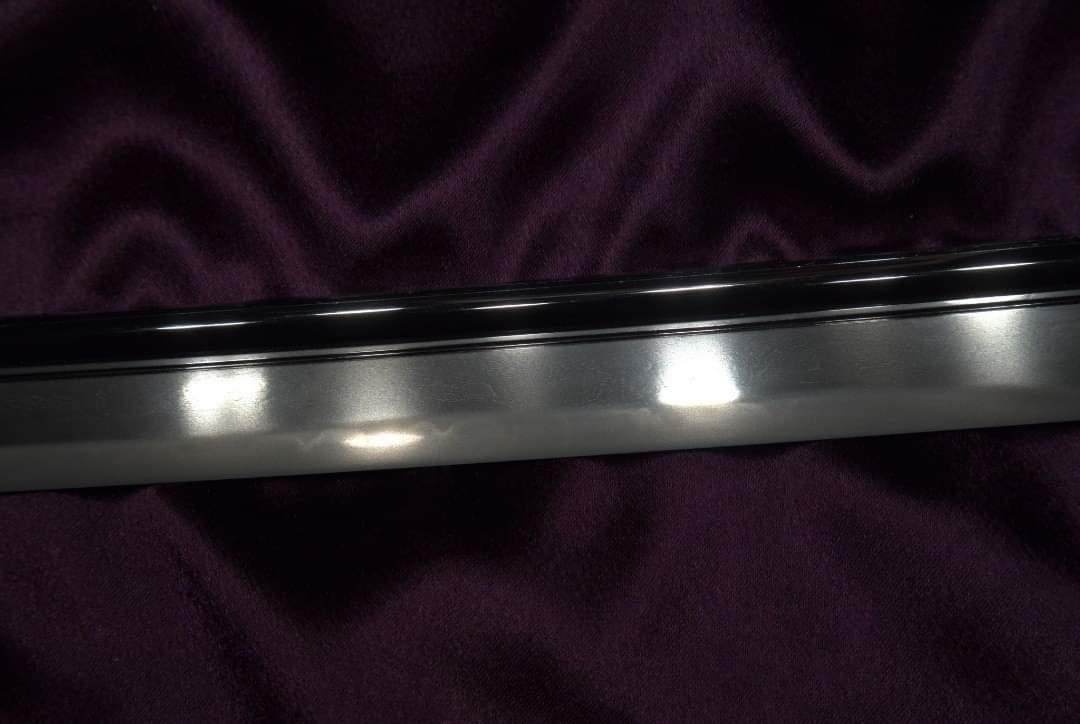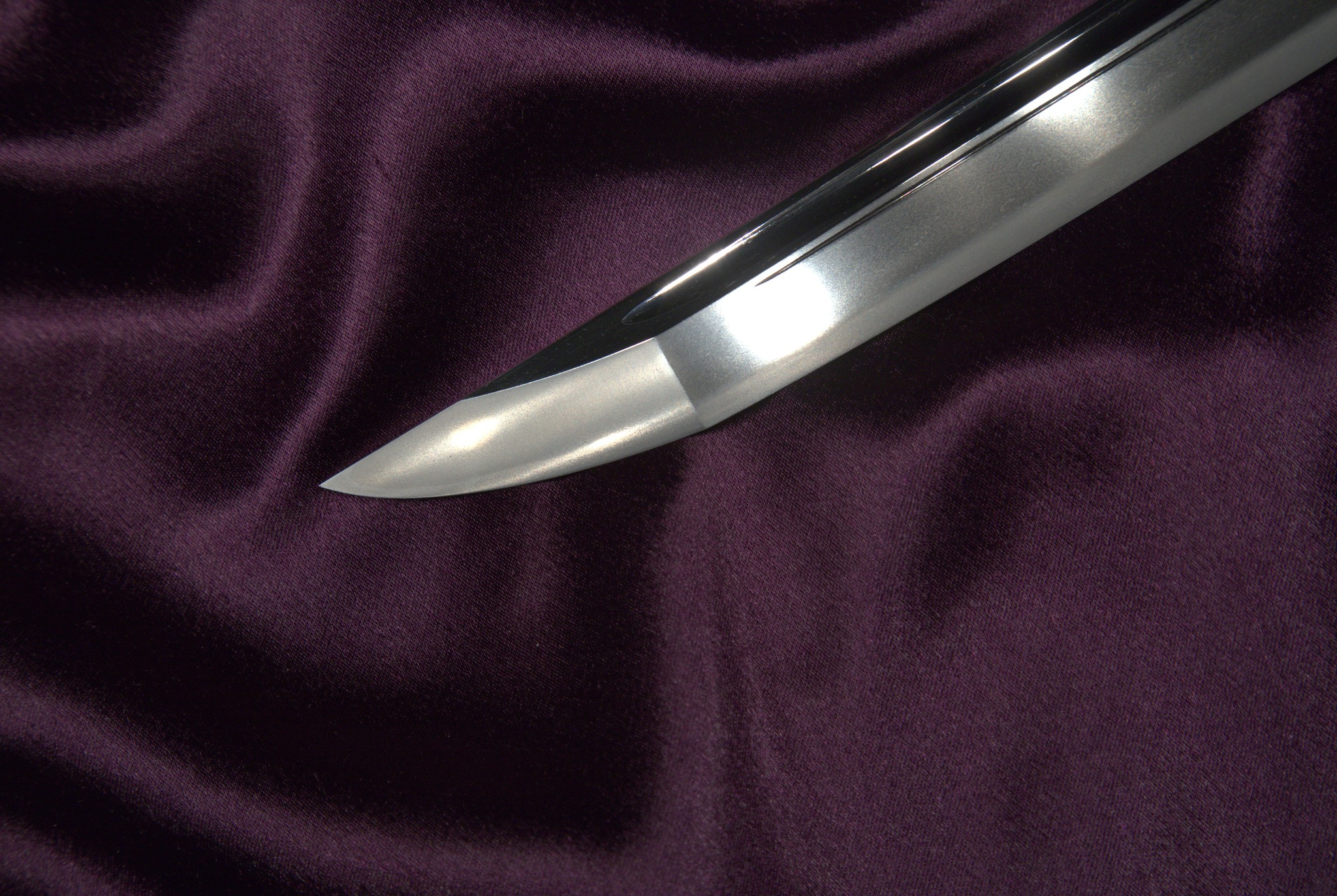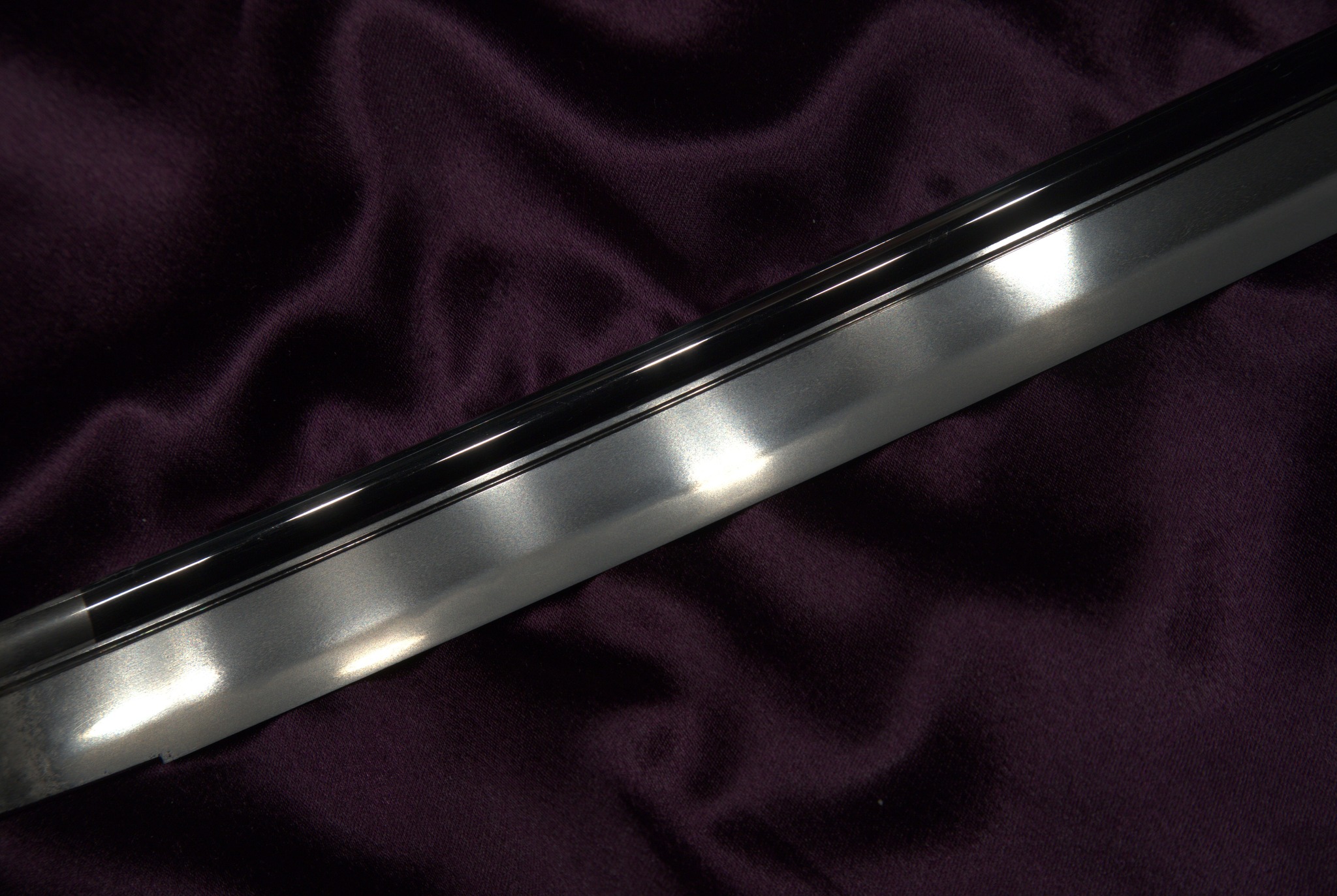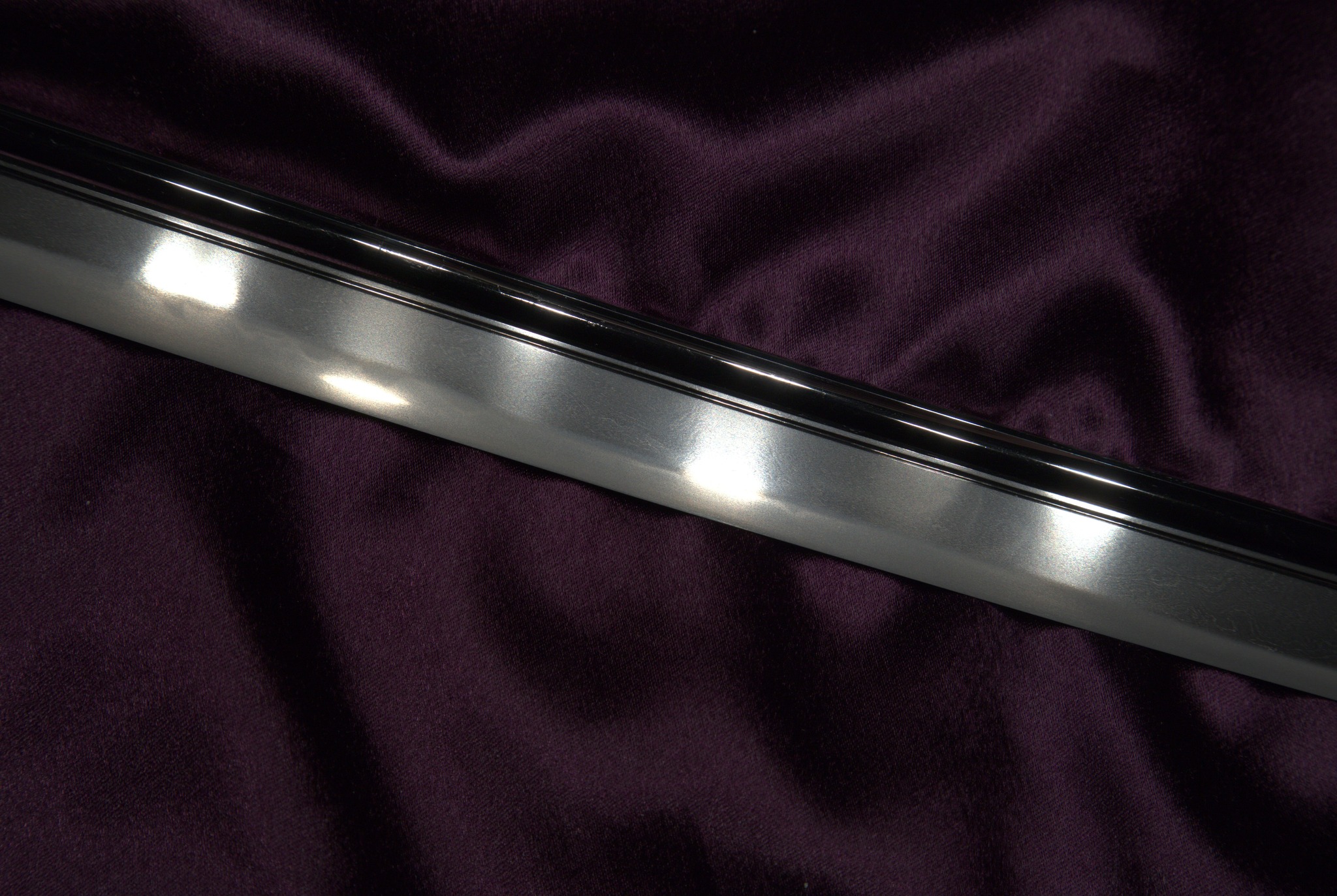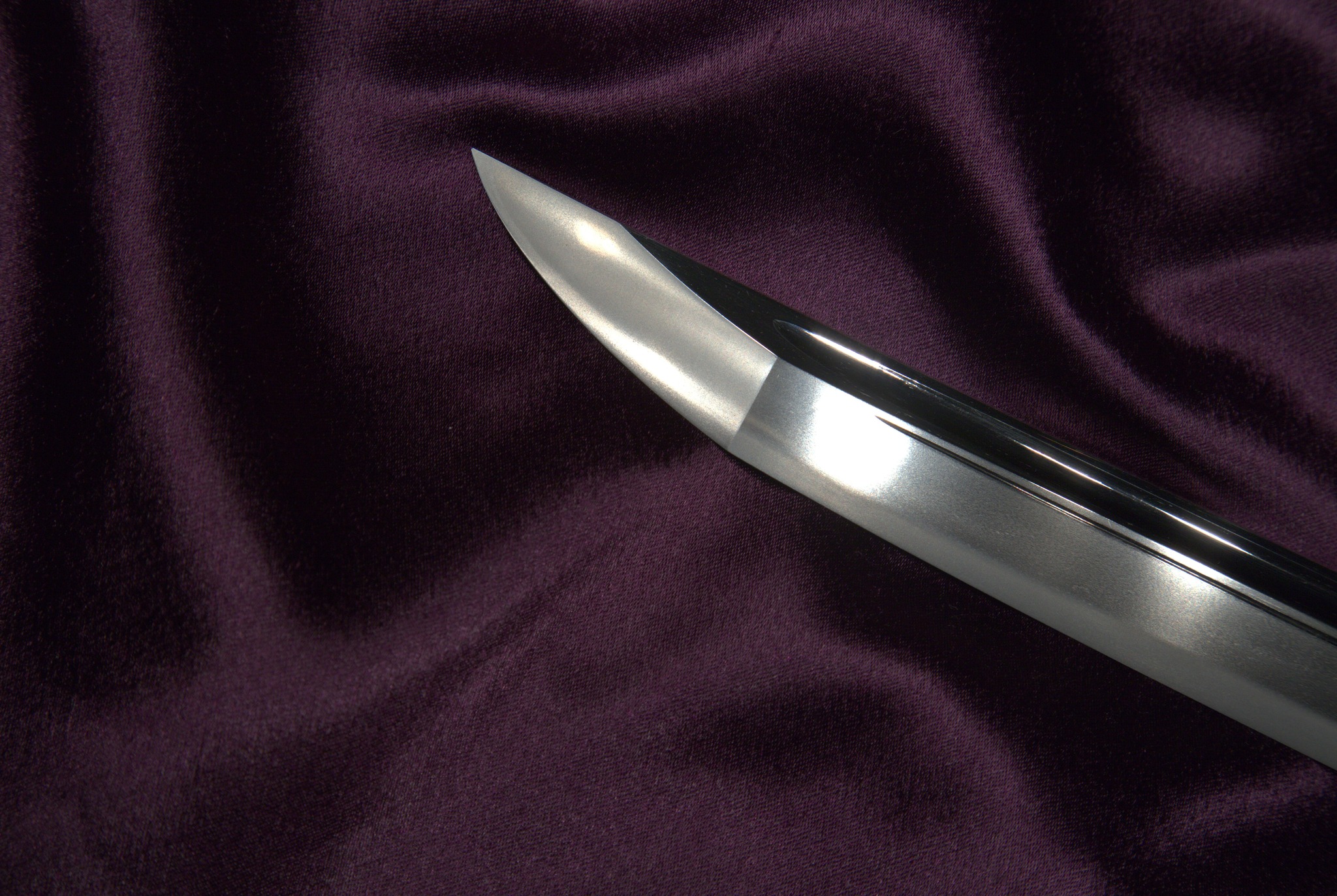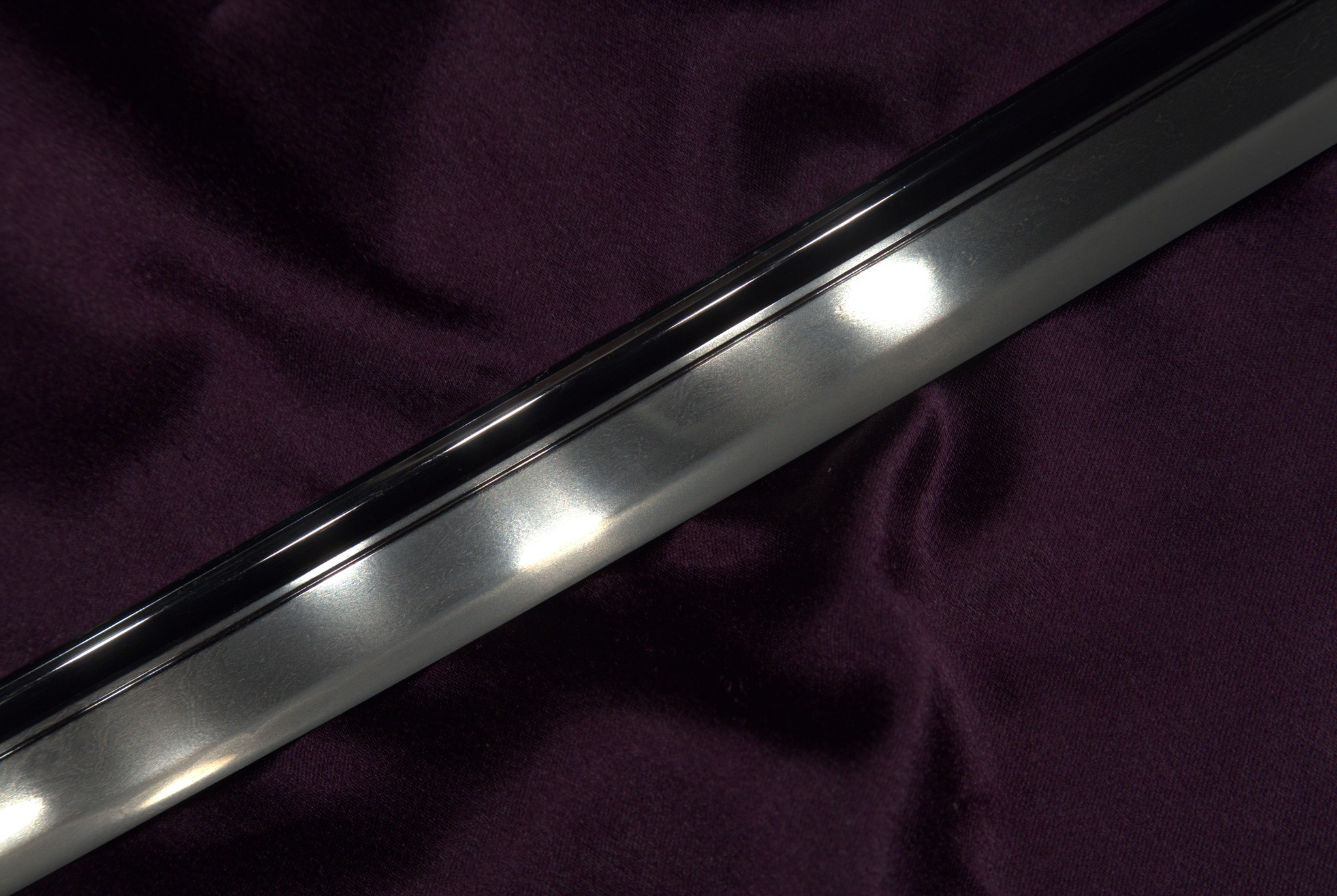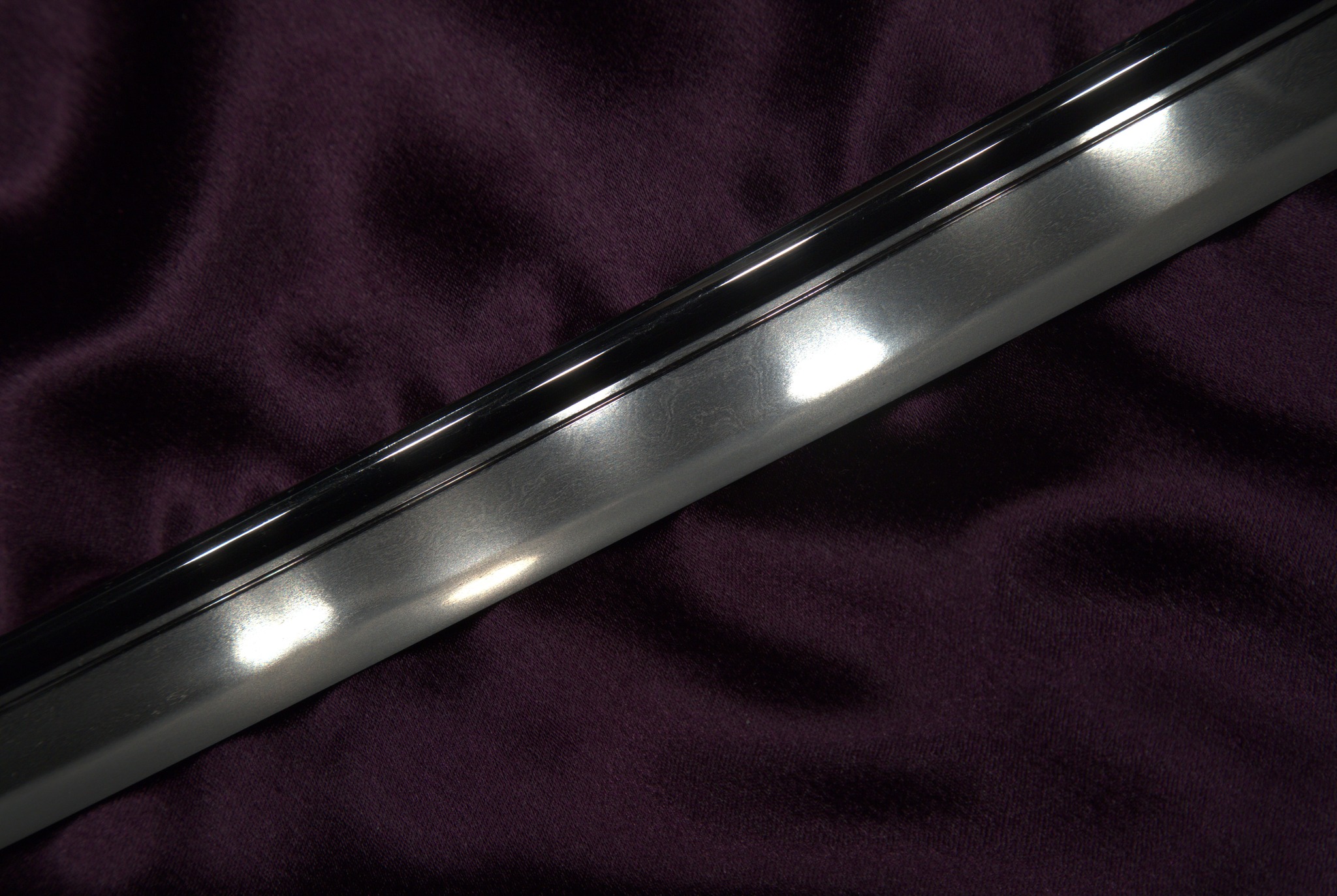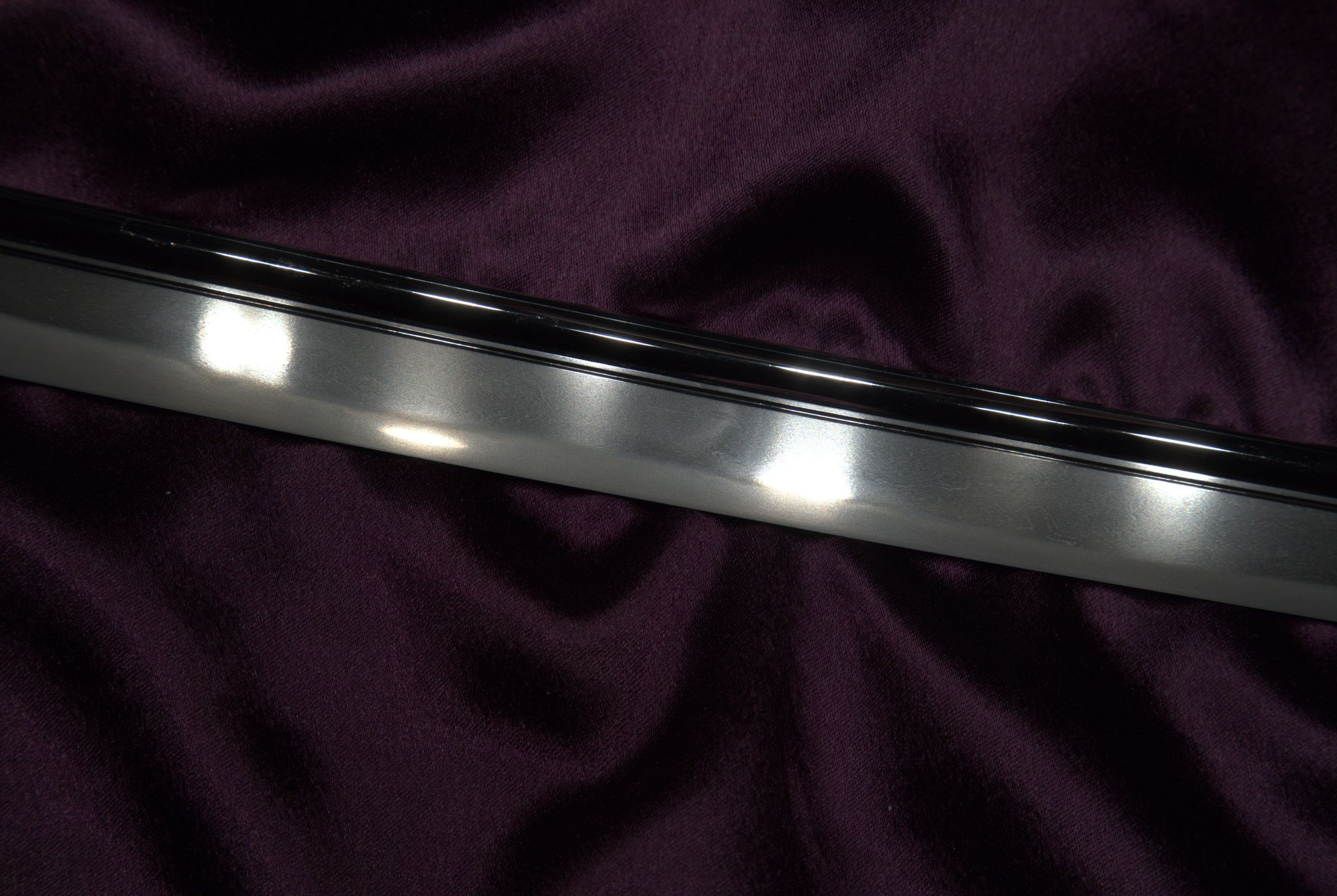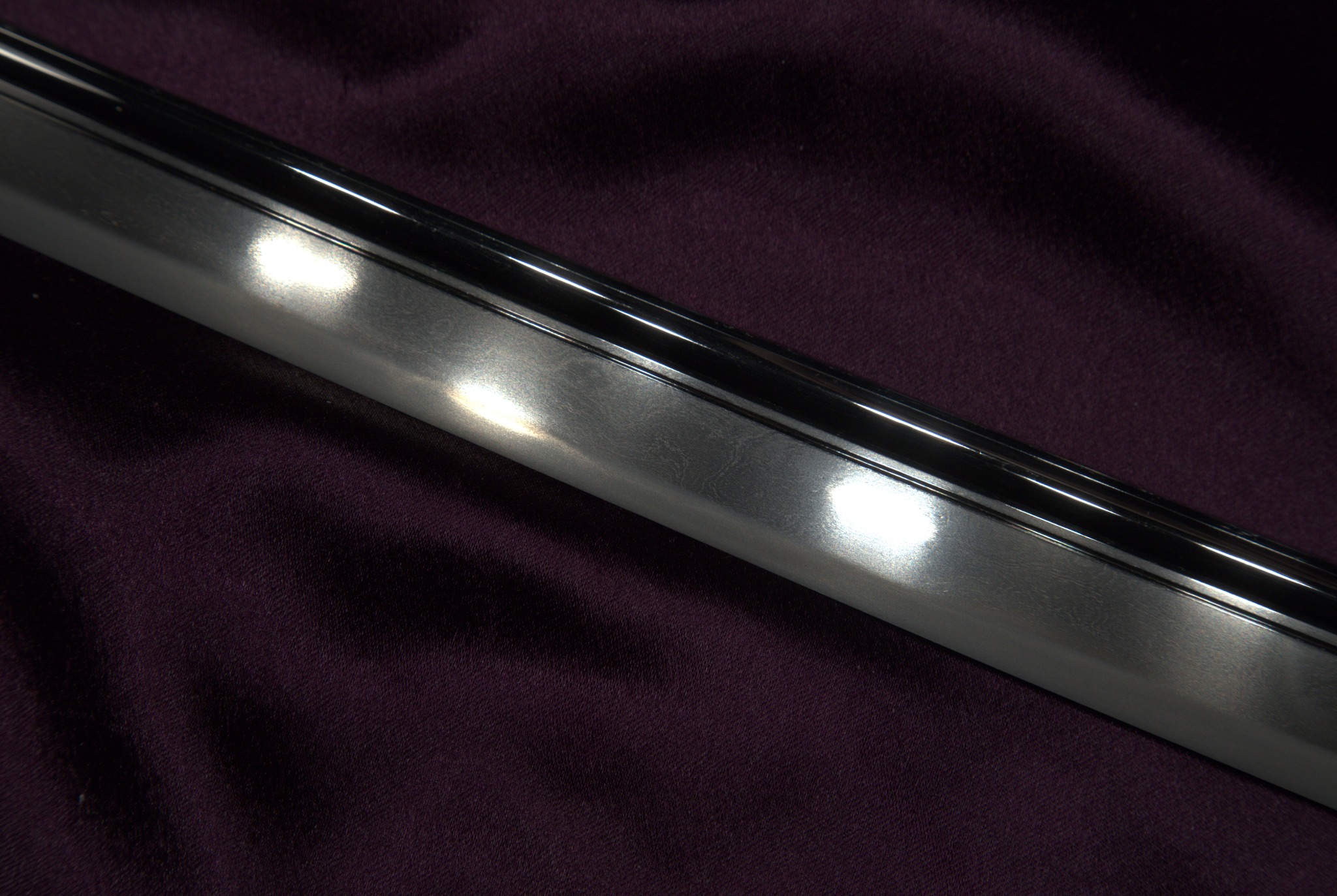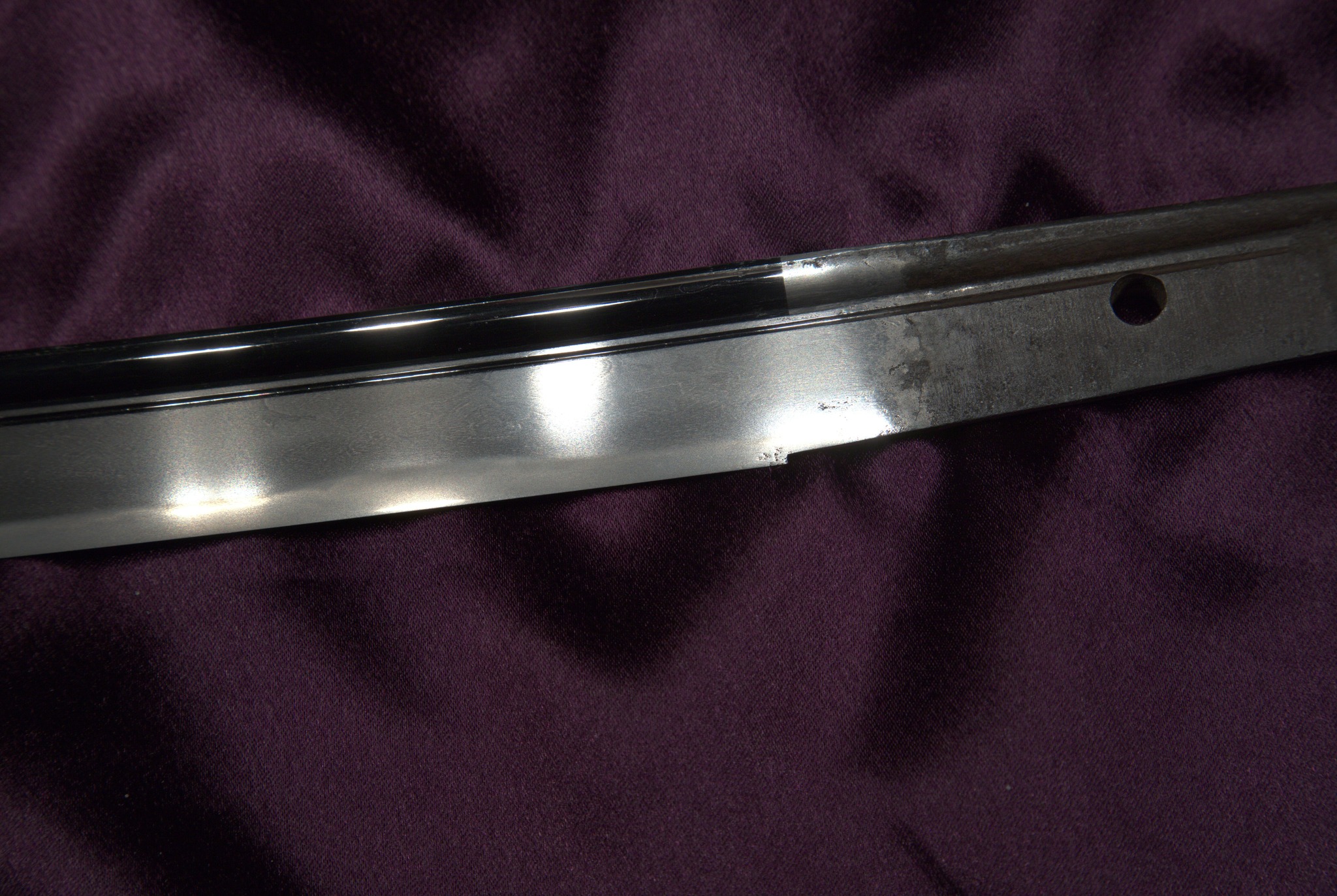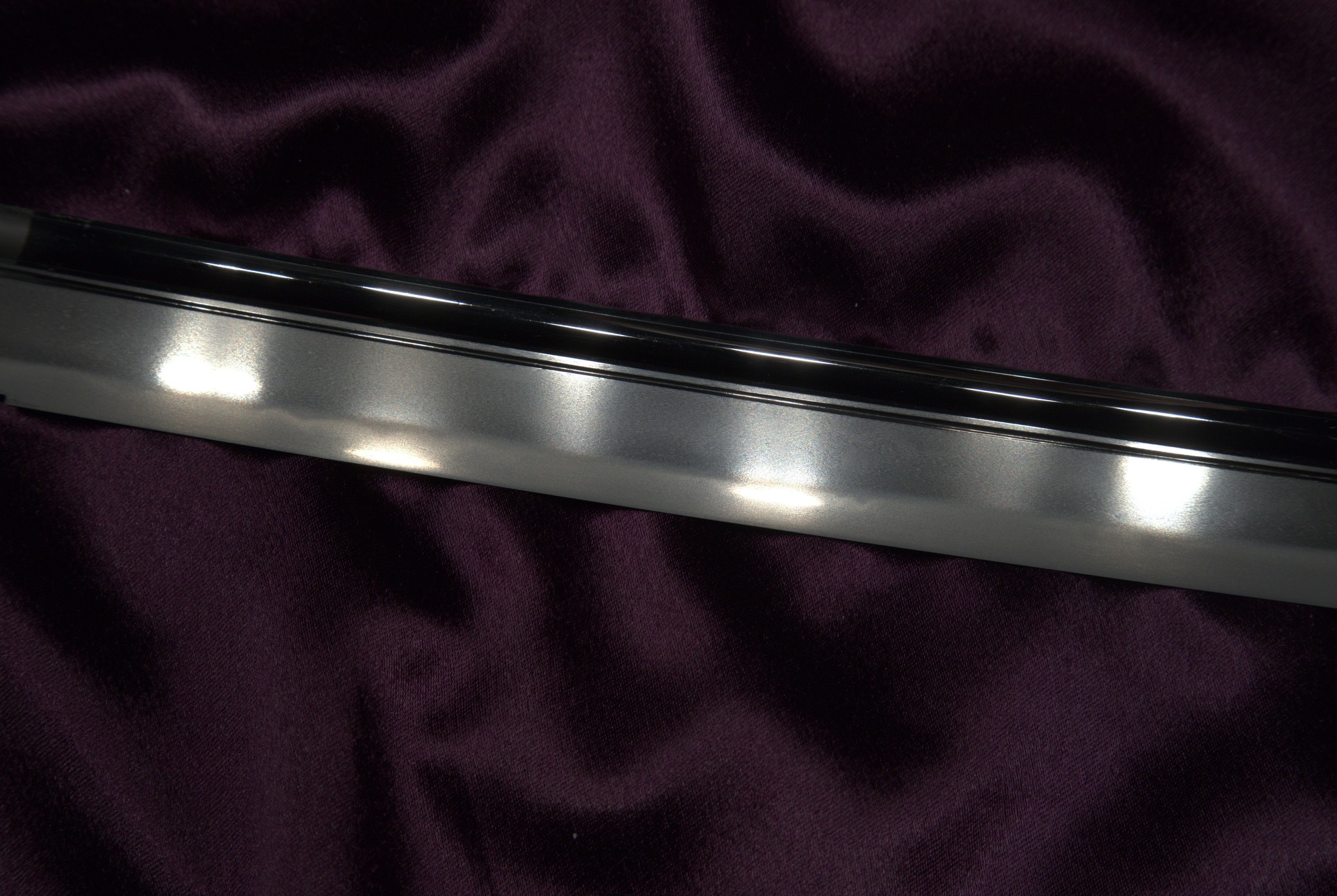Jūyō-Tōken at the 47th Jūyō Shinsa held on October 11, 2001
Katana, mumei: Motoshige (元重)
Tōkyō, Fukatsu Naoki (深津尚樹)
Measurements
Nagasa 66.3 cm, sori 1.0 cm, motohaba 2.9 cm, sakihaba 2.2 cm, kissaki-nagasa 4.9 cm, nakago-nagasa 17.8 cm, no nakago-sori
Description
Keijō: shinogi-zukuri, iori-mune, wide mihaba, no noticeable taper, very shallow sori, ō-kissaki
Kitae: overall standing-out itame that is mixed with mokume and nagare and that features ji-nie, fine chikei, jifu, and a midare-utsuri
Hamon: based on an angular gunome in ko-nie-deki with a rather tight nioiguchi and mixed with gunome, ko-chōji, ko-gunome, prominent indentations referred to as negative togariba, ashi, yō, and a few kinsuji and sunagashi
Bōshi: notare-komi with a brief kaeri that tends to yakitsume
Horimono: on both sides a bōhi with ryō-chiri and a soebi that both run as kaki-nagashi into the tang
Nakago: ō-suriage, kirijiri, kiri-yasurime, two mekugi-ana, mumei
Explanation
Motoshige (元重) was a smith of the Bizen Osafune School, but belonged to a different local lineage than for example Kanemitsu (兼光) and Chōgi (⻑義). We know dated works from the end of the Kamakura period, i.e. the Shōwa era (正和, 1312-1317), to the mid-Nanbokuchō period, i.e. the Jōji era (貞治, 1362-1368), and there exists the theory that two generations have been active over that period of time. As for Motoshige’s workmanship, he forged a kitae that is mixed with nagare-masame and jifu and hardened a hamon with prominent angular gunome, slanting elements, and hataraki like saka-ashi and yō, and with the pointed kaeri, we recognize certain Aoe (⻘江) elements. This tendency towards Aoe is regarded as a characteristic feature of Motoshige.
Motoshige (元重) was a smith of the Bizen Osafune School, but belonged to a different local lineage than for example Kanemitsu (兼光) and Chōgi (⻑義). We know dated works from the end of the Kamakura period, i.e. the Shōwa era (正和, 1312-1317), to the mid-Nanbokuchō period, i.e. the Jōji era (貞治, 1362-1368), and there exists the theory that two generations have been active over that period of time. As for Motoshige’s workmanship, he forged a kitae that is mixed with nagare-masame and jifu and hardened a hamon with prominent angular gunome, slanting elements, and hataraki like saka-ashi and yō, and with the pointed kaeri, we recognize certain Aoe (⻘江) elements. This tendency towards Aoe is regarded as a characteristic feature of Motoshige.

